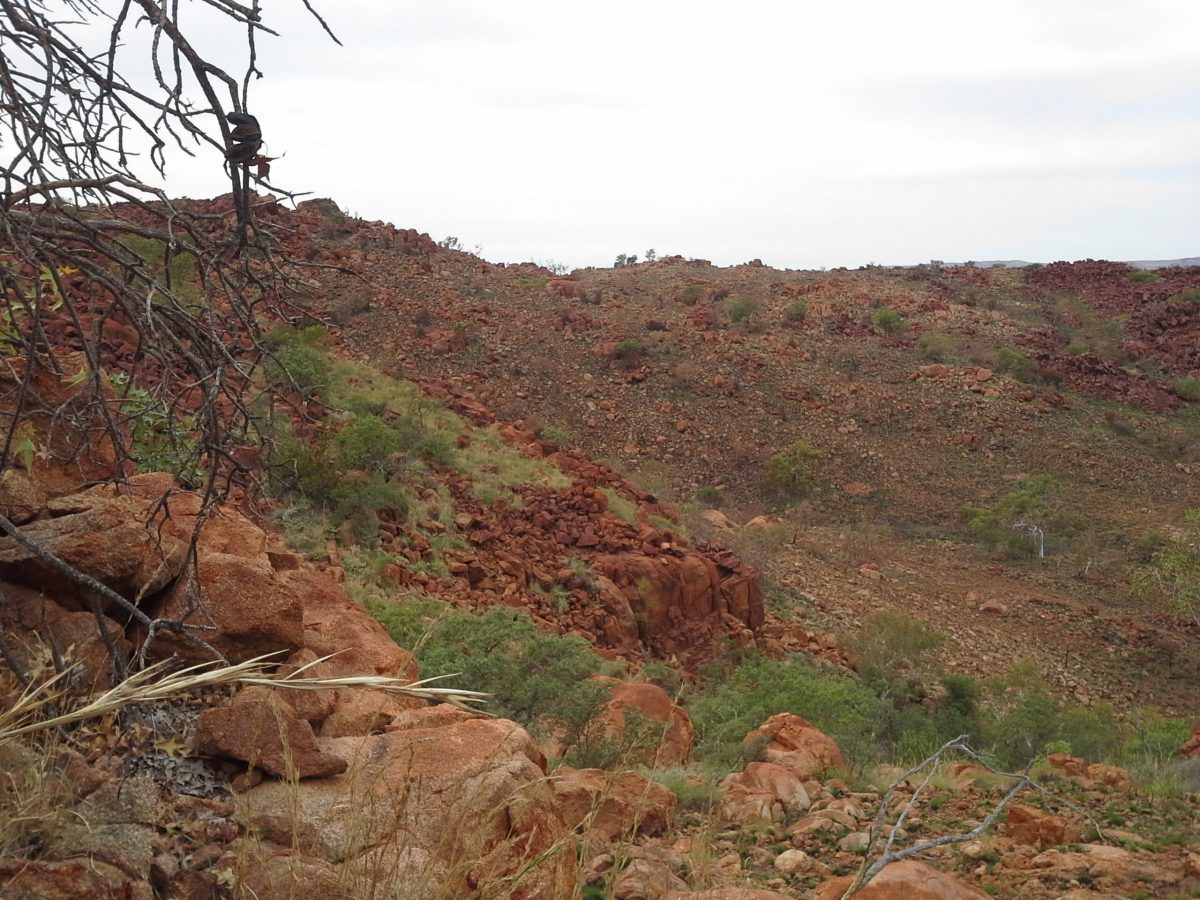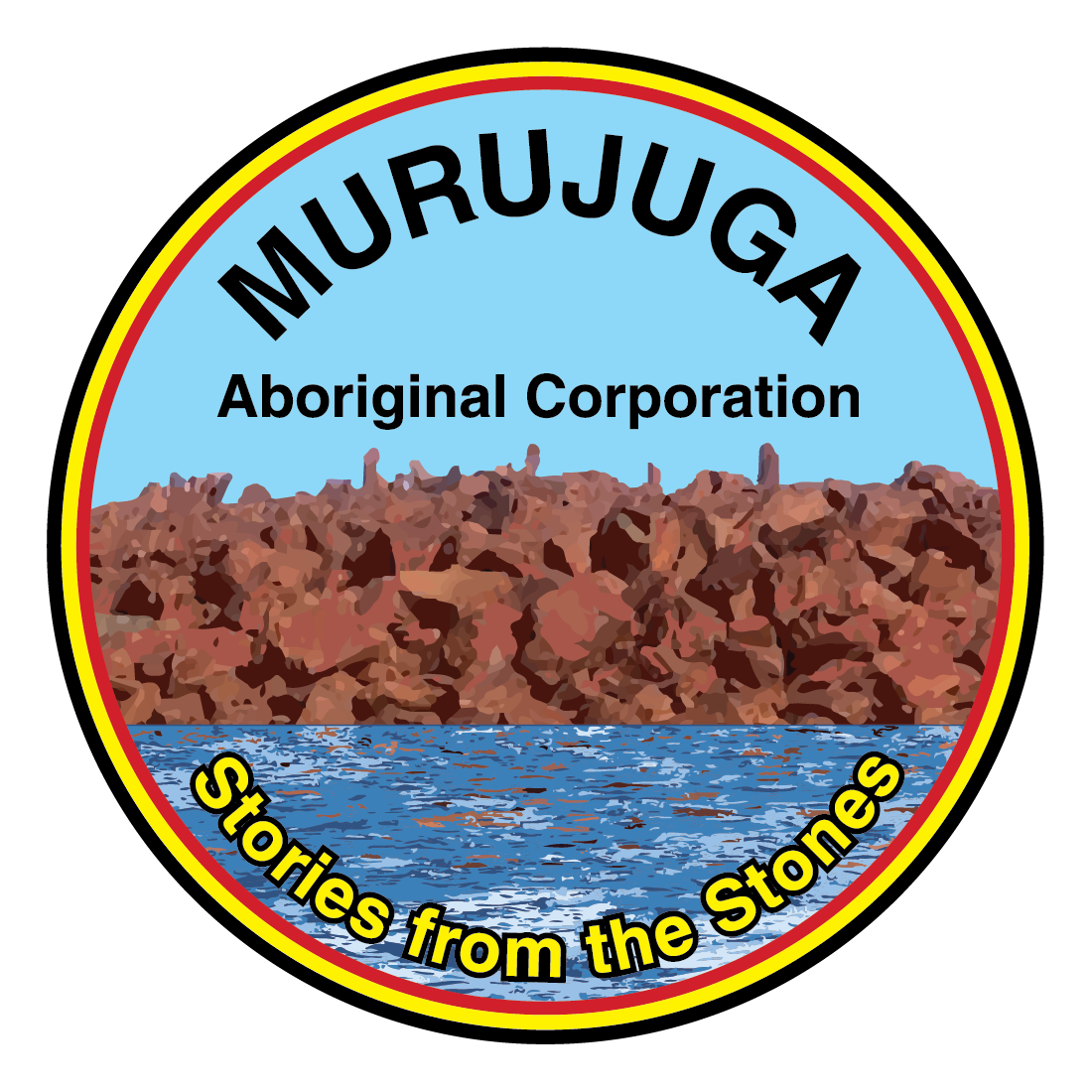
As the custodians of Murujuga, MAC is led by the Circle of Elders and the Board of Directors to speak as a united voice for its 1,200+ members.
Protecting and promoting our land, heritage and culture whilst striving to transform the lives of our community is at the heart of every decision MAC makes.
Ngaayintharri Gumawarni Ngurrangga
We All Come Together For Country.
About Murujuga
When we talk about Murujuga, we talk about Land and Sea Country. Murujuga is an archipelago of 42 islands, islets and rocky outcrops located across approximately 2,500 square km.
These islands were once the high points of an inland desert range when the sea level was lower and the Australian coast was over 100km further out to sea. And so Murujuga is not only the current landscape/seascape that we all see but is also part of a remnant landscape that is directly connected to generations of occupation at Murujuga, and an extensive cultural landscape now submerged beneath the sea.
It is estimated that there are over 2 million petroglyphs within an almost continuous archaeological landscape, which includes petroglyphs, stone arrangements, quarries, shell middens, shell scatters, artefact scatters, scarred trees, grinding patches, cached artefacts, and occasional rock shelters, which can contain stratified evidence of human occupation.
Murujuga is the traditional country of the Yaburara people.
European occupation, the Flying Foam massacre in 1868, and the treatment of their people in the years following, devastated the Yaburara people and there were few survivors left to care for Murujuga. That is why Ngarluma, Yindjibarndi, Wong-Goo-Tt-Oo and Mardudhunera groups all come together to help Yaburara protect Murujuga and are today acknowledged as custodians of this country.
Recent claims within the media that Yaburara people no longer exist are extremely disrespectful and only exacerbate the damage to cultural identity caused by European colonisation, dispossession and destruction.
About the Burrup and Maitland Industrial Estates Agreement
In the early 2000s, there were three overlapping native title claims for Murujuga. The claimant groups (Ngarluma-Yindjibarndi, Yaburara-Mardudhunera and Wong-Goo-Tt-Oo) represented five groups that have ongoing cultural connections to Murujuga.
In 2002, the Western Australian Government sought to acquire additional industrial land at Murujuga. The three native title claimant groups signed an agreement with the Western Australian Government, the Burrup and Maitland Industrial Estates Agreement (BMIEA). In exchange for withdrawing their native title claims, the BMIEA secured the freehold transfer of land that was not required for industrial development to the claimant groups. As part of the BMIEA, the freehold land was leased back to the Western Australian Government at a peppercorn rent for 99 + 99 years to be jointly managed as a national park.
About Murujuga Aboriginal Corporation
The Murujuga Aboriginal Corporation was formed to represent the contracting parties to the BMIEA. The Murujuga Aboriginal Corporation was incorporated in April 2006 and membership is made up of Traditional Owners and Custodians from Ngarluma, Yindjibarndi, Yaburara, Mardudhunera and Wong-Goo-Tt-Oo people.
The Murujuga Aboriginal Corporation Board of Directors is made up of elected representatives from each group and the Board is guided by a strategic plan whose stated mission is ‘to preserve and protect our land, heritage and culture while transforming the lives of our community.’
Over 5,000ha of Murujuga is owned in freehold title by MAC and is currently managed as a National Park. MAC continues to advocate for the transfer of unutilised strategic industrial land into the Murujuga National Park.
Frequently Asked Questions
Has MAC approved developments that have been proposed for Murujuga?
- MAC does not have any role in approving or rejecting developments on the Burrup.
- The State Government of Western Australia is the only body with the authority to approve development within the Burrup and Maitland Strategic Industrial Areas.
- MAC does endeavour to provide advice and recommendations regarding the cultural significance of places and sites that may be impacted by development.
- The facilitation of discussions and advice from the MAC Circle of Elders does not preclude consultation between proponents and any other interested parties.
Does clause 4.8 of the BMIEA ‘gag’ MAC?
- The BMIEA includes a ‘No Objections’ clause, which has been often referred to in the media as a ‘gag clause’.
- This does prevent MAC from lodging any objection to development proposals pertaining to land within the Industrial Estate
- The No Objections clause in the BMIEA does not prevent MAC and the contracting parties represented by MAC from objecting to the damage, destruction or any deleterious impact to cultural heritage values within a development footprint.
What is the impact of emissions on the rock art?
- There is currently no data from previous monitoring projects that allows for a conclusive answer on whether anthropogenic emissions are impacting Murujuga’s rock art.
- Recent publications that claim otherwise have utilised CSIRO data taken between 2004 and 2016 as a key input to their conclusions. The methodology and conclusions of CSIRO’s colour monitoring report have been subject to significant, widespread criticism relating to sample size, data discrepancies and uncontrolled bias.
- There are currently no air emission standards that are applicable to the management and protection of rock art.
What is being done to monitor and manage emissions to protect the rock art?
- MAC is currently working with the Department of Water and Environmental Regulation on the Murujuga Rock Art Strategy, which aims to protect the Murujuga rock art by providing a long-term framework built on an improved approach to monitoring, analysis and management.
- The Murujuga Rock Art Strategy aims to establish an Environmental Quality Management Framework, including the development of environmental standards.
- The Murujuga Rock Art Monitoring Program (MRAMP) is a critical part of the strategy and is underway with air quality monitoring stations currently being installed throughout Murujuga.
- MRAMP is an internationally peer-reviewed, best-practice scientific program to monitor, evaluate and report on changes and trends in the integrity or condition of the rock art to determine if anthropogenic emissions are accelerating the natural weathering of the rock art.
- Conceptual models have been developed to ensure that we understand the interactions between the environment and the rock art in order to identify and manage any risks to the rock art.
- Recent EPA conditions attached to development proposals on Murujuga have included future compliance with air quality objectives and standards derived from the results of the Murujuga Rock Art Monitoring Program
What protections does Murujuga currently have?
- Murujuga is currently on the National Heritage List, inscribed in 2007 as the “Dampier Archipelago (including Burrup Peninsula)”.
- The National Heritage Listing (NHL) specifically protects rock art and stone arrangements, which have been successfully argued to meet NHL criteria a, b, c, d and f.
- The National Heritage Listing Boundary is publicly available and does include some land within the strategic industrial areas.
- NHL places are protected under the Environmental Protection and Biodiversity Conservation Act 1999 (EPBC Act).
- The EPBC Act requires a Commonwealth assessment and approvals process for any development that is likely to have an impact on the NHL Values of a property, regardless of whether that development is located within the NHL boundary or not.
What is the current status of World Heritage Listing?
- Murujuga was added to Australia’s World Heritage tentative list in February 2020.
- Murujuga Aboriginal Corporation and the State of Western Australia are currently preparing the World Heritage nomination, in collaboration with the Commonwealth Government.
- It is anticipated that the World Heritage nomination will be completed for submission to the World Heritage Centre in 2023.
- A successful inscription on the World Heritage List (WHL) will not change the protections that are currently in place for Murujuga. WHL places are protected under the Environmental Protection and Biodiversity Conservation Act 1999 (EPBC Act), in exactly the same way that NHL places are.
- What WHL will achieve is the protection of additional values within the Murujuga Cultural Landscape, particularly values relating to Law, spirituality, and a continuous living culture.
Ngaayintharri Gumawarni Ngurrangga
We All Come Together For Country.
